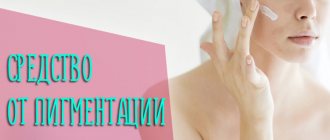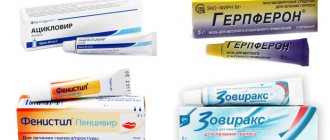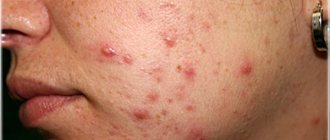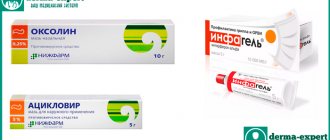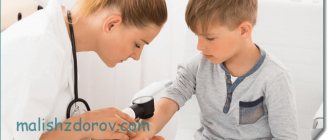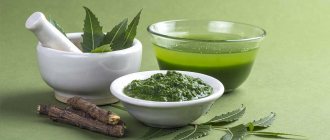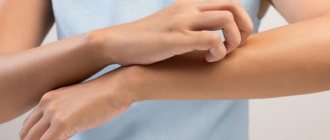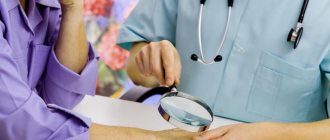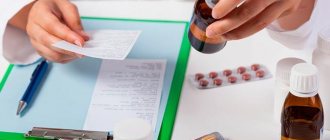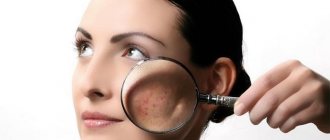Acne classification
According to the severity of damage to the skin, the following degrees of acne are distinguished:
- Mild degree . A small (no more than 10) number of blackheads and comedones appear on the skin, there is no inflammation of the skin, there are no complications.
- Moderate degree . More blackheads, closed and open comedones appear on the skin, and the skin is inflamed. The treatment is long (about two months), but the prognosis is favorable.
- Severe degree . The number of skin rash elements (pustules, papules, comedones) increases sharply. To get rid of acne, long-term drug therapy is required.
- Extremely severe . Acne affects a large area of the skin, which appears severely inflamed. In this case, long-term complex treatment is necessary.
Kinds
Herbal remedies for acne come in different forms. Such substances can be purchased at a pharmacy or made independently.
Pharmacy
At the pharmacy you can buy ready-made alcohol tinctures based on plants. However, it is worth considering that such products are only suitable for those with oily skin types.
Such substances include alcohol, which greatly dries out the dermis. Therefore, they are not suitable for people with dry or normal skin. In this case, there is a risk of increased irritation.
Folk
You can prepare effective remedies yourself. Thanks to the use of homemade decoctions, it is possible to soothe the skin, achieve a softening and cleansing effect, and cope with bacterial microorganisms.
All this significantly improves the condition of the dermis and reduces the number of acne. Calendula flowers, sage, chamomile, aloe, St. John's wort, etc. can achieve this effect.
Causes of acne
There are quite a few reasons why acne appears on the skin . Most often this occurs due to increased activity of the sebaceous glands, which leads to the fact that the secretion they secrete cannot come out. As a result, a sebaceous plug is formed and when microbes get there, the process of suppuration begins, and acne appears.
In addition, the reasons for the development of acne can be:
- unhealthy diet – abuse of fried, fatty, salty foods, excessive consumption of carbohydrates (pasta, baked goods, marmalade, jam, sugar);
- emotional overstrain, stress - during these conditions of the body, the adrenal glands are activated, which leads to hormonal imbalance and the appearance of acne;
- taking certain medications (antidepressants, hormones and a number of others);
- using low-quality or unsuitable cosmetics for the skin - for example, persistent deep acne often occurs due to the use of foundation, which clogs the pores;
- Improper cleansing of the skin leads to clogged pores and the appearance of acne;
- disruption of metabolic processes in the body;
- hormonal changes (during puberty, pregnancy, menstruation, menopause), which activate the activity of the sebaceous glands and increase the density of sebum;
- frequent constipation - leads to intoxication of the body and the appearance of acne;
- subcutaneous mite infection;
- hypovitaminosis;
- dysfunction of the immune or endocrine system;
- gastrointestinal diseases.
Contraindications
Despite the presence of a wide range of beneficial properties, the plant has relative and absolute contraindications. Caution is necessary for people:
- those suffering from hay fever;
- overly sensitive to ultraviolet radiation (photosensitivity).
Absolute contraindications include:
- any trimester of pregnancy;
- period of breastfeeding and gestation;
- high blood pressure (hypertension);
- rehabilitation period after organ transplantation;
- regular use of oral contraceptives;
- taking psychotropic drugs;
- taking anticoagulants.
Interesting fact: The active ingredients in any external product are able to penetrate the systemic bloodstream. St. John's wort provokes an exacerbation of manic syndrome, increases blood pressure and intensifies the process of rejection of transplanted tissues. Hypersensitive people may experience discomfort after using decoctions and masks of St. John's wort (burning sensation and itching, skin rashes, urticaria).
Acne symptoms
The main symptom of acne is the appearance of various rashes on the skin. The clinical picture depends on the type of acne.
Acne conglobata usually appears on the chest and back and is a cluster of comedones, which, as the disease progresses, gradually merge into one large, painful nodule. This is a severe form of acne that requires immediate medical treatment.
Blackheads are skin rashes with a black dot in the center . The top of the pimple is formed by dead skin cells and sebum, and the black core is formed by the dense secretion of the sebaceous gland.
Lumpy (indurative) acne is a painful, blue-red, pea-sized nodule that, when healed, leaves a reddish scar on the skin.
Papular acne is a dark-colored rash around which foci of skin inflammation appear. Externally, pimples look like small, pointed nodules. After they disappear, there are practically no traces left on the skin.
Phlegmonous acne is a pustular, large, painful formation. When such rashes appear, the skin becomes very inflamed. After healing, a hole or scar remains on the skin.
Reviews
Like all natural remedies, herbal tinctures and decoctions receive both positive and negative reviews. However, traditional methods of treating skin are firmly rooted in consciousness, which is why medicinal plants are most often used to treat acne.
Chamomile, calendula and chamomile have been known since ancient times as plants that help with rashes, so most users choose them. Other herbs are also popular, however, comments confirm that they can be limited only to periodic rashes and single pimples. Severely affected skin must be treated with more serious methods.
Source
Diagnosis of acne
The clinical picture is quite obvious, so making a diagnosis does not cause much difficulty. To identify the causes of acne, additional studies may be prescribed:
- blood test (general) - detects the presence of an inflammatory process in the body;
- blood test for hormones;
- blood test (biochemical);
- analysis of the contents of eels for pathogenic microflora and sensitivity of the pathogen to antibiotics;
- analysis for intestinal dysbiosis;
- consultations with specialists depending on the identified pathological changes (gastroenterologist, gynecologist, andrologist, therapist, endocrinologist).
Acne treatment
Before starting treatment for acne, it is necessary to find out the causes of its occurrence and eliminate all provoking factors that can lead to the formation of acne.
First of all, it is necessary to normalize nutrition . You should avoid fast food, fatty, fried, smoked foods, sweets, and baked goods. Your diet should include more fresh fruits and vegetables, rich in fiber, vitamins and microelements necessary for the normal functioning of the body.
To increase the body's immune defense, the following groups of medications can be prescribed:
- immunomodulators;
- multivitamin complexes;
- lipotropic drugs;
- angioprotectors.
To normalize the functioning of the nervous system, relieve stress and emotional stress, the prescription of sedatives is indicated.
There are a large number of different treatments for acne. Some of them are applied directly to the site of inflammation and have a local effect, while some are taken orally and have a systemic effect on the entire body.
Numerous acne cosmetics are a temporary solution to the problem . They reduce sebum production and lead to a decrease in acne, but after you stop using them, the acne comes back.
In mild cases of acne, when there are few rashes, you can use ointments with antibiotics (lincomycin, erythromycin and a number of others), treat the lesions with solutions of resorcinol and salicylic acid.
Antibiotic ointments destroy pathogenic organisms that cause skin inflammation. They are applied twice a day. In severe forms of the disease, a combination of local and systemic therapy is indicated.
Beneficial properties of medicinal herbs
Pimples, acne, age-related changes, pigmentation and freckles are just a few of the problems that plague women. The question: how to get rid of acne is relevant at any age. In each specific case there must be an individual approach to solving the problem. You can find the required collection using the recommendations of experts. The composition of medicinal plants includes phytoncides, tannins, organic acids that have antiseptic and disinfectant properties. Treatment of skin problems should be comprehensive. Using both external application: for washing, in the form of lotions, masks, compresses, and internal use of decoctions and tinctures accelerates the positive result. There are many recipes that help in this situation, you just need to choose the right raw materials and use them correctly.
- Herbs for acne on the face - sandy immortelle, three-year-old (and older) aloe, calendula flowers, chamomile, lavender, string.
- Problematic facial skin with increased oil content - stinging nettle, linden inflorescences, horsetail, oak bark. Eating plantain, mint, butterbur, burdock root, and birch buds will be beneficial.
- Dry skin – motherwort, thyme (bonnet is a common name).
- Flowers of coltsfoot, chamomile, and sage remove wrinkles and make age-related changes less noticeable.
- Cleansing plants - raw materials of rowan, nettle.
- Destroy pigmentation, freckles, whiten the skin - parsley, dandelion caps.
About
Folk remedies for acne
Acne is an obvious external defect that spoils the mood and brings discomfort to its owner. There are an impressive number of methods for eliminating an annoying defect: these are cosmetic products, dietary supplements and even medications for oral administration.
Traditional treatment occupies a special place in anti-acne therapy. The advantages of this method are obvious:
- There is no need to visit a doctor and endure painful manipulations, because you can prepare the drugs yourself and use them at home.
- There is almost an absolute absence of side effects, since traditional acne treatment involves the use of only natural, natural ingredients.
- Availability of components, ease of preparation, ease of use.
Nettle acne remedies
Common nettle, which grows in abundance along the fences of many garden plots, contains a complex of substances valuable for the body. This weed helps to activate the digestive tract, skin regeneration processes, and reduce sebum secretion. Medicines based on nettle leaves are successfully used in home cosmetology for the treatment of acne.
- Take half a glass of nettle leaves, grind in a meat grinder, pour 200 ml of cool water. Leave for 7-8 hours, it is acceptable to leave overnight. Dividing into three equal parts, drink the tincture three times a day in equal parts half an hour before meals.
- And this healing face mask for acne is prepared like this. Take one equal part (a large spoon) of nettle leaf, pink petals, chamomile color. If the raw materials for the preparation of a cosmetic product are not available, it can be purchased at a herbal pharmacy. Pour 200 ml of boiling water and cool until completely cool. This product can be used as a mask by soaking a piece of clean gauze in the liquid and applying it to the problem area for 15-20 minutes, or you can freeze it in ice cube trays and treat your face with it.
Horseradish medicine for acne
Wash the horseradish root from dirt and dust, lightly peel, grind on a grater, meat grinder or blender, place in a glass container so that the mass fills the bottle 1/3. Then add wine vinegar until the bottle is full and infuse the drug for 10 days. After this period, the tincture should be filtered and applied externally. This is done like this: wash your face with cool water (you can use a foam wash with a neutral PH factor), then apply horseradish infusion for 10-15 minutes. After the procedure, the skin of the face should be rinsed again, first with warm, then with cool water.
Celandine against acne
This unpretentious herb is a great way to combat facial rashes. Celandine juice helps get rid of harmful microorganisms, inflammation, excessive oiliness of the skin, accelerates its recovery, and promotes the resorption of acne scars. Prepare 4 large spoons of crushed leaves and celandine flowers, pour in a liter of water. Let it boil for about five minutes, preferably in a water bath. Then leave to cool for 7 - 8 hours, after which we strain through cheesecloth and squeeze. Pour the healing infusion into a glass bottle, which should be stored in the refrigerator. This lotion should be used to treat acne 2-3 times a day.
Treating acne with dandelion
- The drug for oral administration is prepared as follows . Grind the pre-dried dandelion rhizome and pour boiling water over it. We keep the proportions as follows: 1 large spoon of raw materials per 200 ml of water. Let it sit for 15-20 minutes, strain through cheesecloth, and squeeze. We drink once a day before going to bed.
- Dandelion rhizome mask . Grind the fresh juicy root on a grater or meat grinder, apply the resulting pulp to the places where acne has formed, and fix it with a band-aid. You need to keep this mask for 15 - 20 minutes, then rinse your face with cool water to tone the skin.
Fighting blackheads
But what about those whose face is affected by black acne? Traditional medicine knows several effective ways to eliminate this cosmetic defect using home recipes.
Yarrow
This field herb will help quickly improve the condition of skin affected by blackheads.
- Take dry yarrow flower in the proportion of 1 teaspoon per 200 ml of boiling water, mix the ingredients, leave for 20 - 30 minutes. You should wash your face with this infusion in the morning and evening, or freeze the infusion in ice cube trays and wipe your face.
- The same potion can be used to prepare a mask, which is prepared as follows: take black clay and yarrow infusion, mix until a homogeneous paste is obtained. This mask should be applied to the face for 15-20 minutes twice a week.
Pine lotion
To prepare a healing lotion for acne, we will need: 100 grams of pine needles (any), 25 grams each of: dry chamomile, plantain leaf, dry calendula. Fill the raw material with 500 ml of vodka and leave in a dark place for 7 – 10 days. Then the tincture must be strained, poured into a dark glass bottle and stored in the refrigerator. The lotion will retain its healing properties for a long time; it is advisable to use it for 12 months, rubbing the inflamed skin twice a day.
The advantage of traditional medicine is that all products for preparing potions grow in abundance in the steppes, forests or in summer cottages, so stocking up on them will not be difficult.
Nettle
This burning weed contains a large amount of vitamins: A, B, C, E, K, as well as tannins, phytoncides, and trace elements. It copes well with inflammation, so nettle is the best option for pustular rashes. It also has an exfoliating effect and helps renew the upper layer of the epidermis.
In addition, nettle rejuvenates, smoothes wrinkles, evens out skin texture and color. You can make lotions, tonics, and masks from this herb. It is used both externally and taken internally to cleanse the body.
The most effective grass is collected in May-June, before flowering. It can be prepared for future use. Dried nettle does not lose its medicinal properties; all beneficial substances are completely preserved.
Acne prevention
The main methods for preventing acne are:
- proper nutrition;
- compliance with hygiene rules, facial and body skin care;
- refusal of excessive use of cosmetics, as well as low-quality cosmetics;
- timely treatment of diseases of internal organs that can lead to acne;
- regular sanitation of foci of chronic infection in the body;
- avoidance of stress, emotional overstrain;
- giving up a sedentary lifestyle - physical exercise, regular walks in the fresh air;
- use of personal protective equipment when working in hazardous industries;
- When pimples appear, do not squeeze them out or touch your face with dirty hands, this will only increase inflammation.
Tea for acne - what are its benefits?
Photo 24 - Green tea for acne
It is known that green tea relieves acne no worse than other remedies. It soothes the skin and has properties that make it an excellent anti-acne and health booster.
Attention! It is important to drink green tea without sugar, only in this form the drink will be as beneficial as possible and will give you a fresh and healthy look.
Photo 25 – Green tea effect
Where can I buy
But what about those who are not the happy owner of their own hacienda or do not like forest walks? You can purchase ready-made acne remedies and/or order all the necessary ingredients in the Russian Roots online store.
Delivery in Moscow and the Moscow region is carried out using a courier service, and in other regions of Russia - by mail.
You can purchase drugs or goods for their production by visiting our herbal pharmacies in Moscow.
Attention! All materials published on our website are protected by copyright. When re-publishing, attribution and a link to the original source are required.
External use
To use herbal remedies for acne on the face, you need to follow the instructions for use. Before getting rid of acne using herbal remedies and remedies, be sure to do an allergy test if you are using the product for the first time. Whatever fees you use, this is a mandatory condition. Take a small amount of the product and apply to the inside of your palm, wrist or elbow. If after a few minutes you do not feel discomfort: burning, itching, hyperemia or swelling does not appear, begin the intended procedure. To treat acne, tonics, masks, decoctions, and ice cubes are most often used.
About
